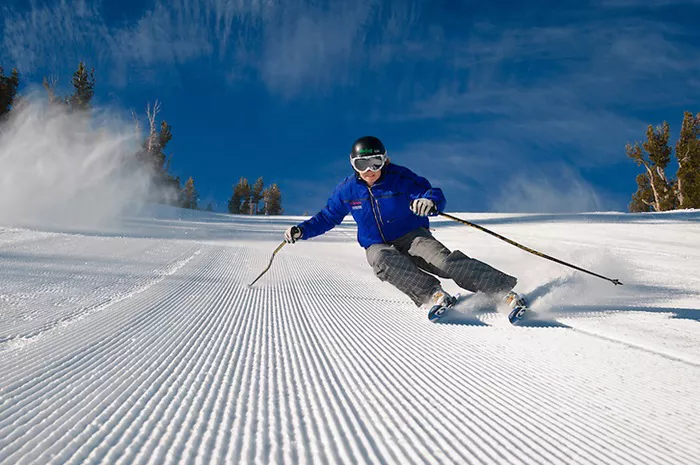Skiing is an exhilarating winter sport that offers a unique combination of speed, agility, and breathtaking scenery. For beginners, mastering the art of turning is crucial to navigating slopes safely and confidently. Turning while skiing involves shifting your weight, adjusting your edges, and using your poles to control direction and speed. This article will guide you through the process of learning to turn on skis, providing step-by-step instructions and tips to help you improve your technique.
Understanding The Basics of Skiing Turns
Before diving into the specifics of turning, it’s essential to understand the basic principles of skiing. This includes knowing how to stand, balance, and move on skis. The stance should be slightly wider than shoulder-width apart, with knees bent and weight evenly distributed on both skis. Familiarize yourself with the different parts of your skis, such as the tips, tails, and edges, as these play a significant role in turning.
Key Components of A Skiing Turn
Edges: The edges of your skis are the metal strips along the sides.
They are crucial for turning as they grip the snow, allowing you to change direction. Learning to control your edges is vital for smooth turns.
Weight Transfer: Shifting your weight from one ski to the other helps initiate turns. This movement determines the direction and speed of your turn.
Pole Use: Ski poles help with balance and timing. They can also assist in initiating turns by planting them in the snow at the start of a turn.
Body Positioning: Keeping your body centered and facing downhill is important. Your shoulders should be aligned with the direction of travel, and your knees should absorb bumps to maintain balance.
Learning to Turn: A Step-by-Step Guide
Preparing for a Turn
Start on a Gentle Slope: Beginners should practice on gentle slopes where they can control their speed easily.
Position Your Skis: Keep your skis parallel to each other and slightly angled to the direction you want to go.
Balance and Stance: Ensure your knees are bent, and your weight is evenly distributed on both skis.
Initiating a Turn
Shift Your Weight: To turn, start by shifting your weight onto one ski.
For example, to turn left, shift your weight onto your left ski.
Apply Edge Pressure: As you shift your weight, apply pressure to the edge of the ski you’re turning onto. This will help the ski grip the snow and start turning.
Use Your Poles: Plant your pole on the side you’re turning towards, just before you start the turn. This helps with timing and balance.
Rotate Your Body: As you start turning, rotate your body so that your shoulders and hips face the direction of the turn.
Completing the Turn
Maintain Edge Control: Keep the edge of your ski engaged throughout the turn to maintain control and direction.
Shift Weight Back: As you exit the turn, shift your weight back onto both skis to stabilize and prepare for the next turn.
Practice Both Directions: Practice turning in both directions to develop balanced skills and improve overall control.
Tips for Improving Your Turns
Practice Regularly
Consistency is Key: Regular practice helps build muscle memory and improves your technique over time.
Focus on Balance
Keep Your Center of Gravity Low: Bending your knees and keeping your weight centered helps maintain balance during turns.
Use Visual Aids
Look Where You Want to Go: Keep your eyes focused on the direction you want to turn. This helps guide your body and maintain direction.
Take Lessons
Professional Guidance: Consider taking lessons from a certified instructor. They can provide personalized feedback and help you correct any bad habits early on.
Common Mistakes to Avoid
Overweighting One Ski
Even Weight Distribution: Avoid putting too much weight on one ski, as this can cause you to lose control or fall.
Not Rotating Your Body
Body Alignment: Failing to rotate your body with the turn can lead to poor control and balance issues.
Not Practicing on Different Terrains
Terrain Variety: Practice turning on different slopes and conditions to adapt your skills to various scenarios.
Conclusion
Learning to turn while skiing is a gradual process that requires patience, practice, and persistence. By understanding the basics of skiing, mastering the key components of a turn, and following the step-by-step guide provided, beginners can quickly improve their skills. Remember to stay focused on balance, use visual aids to guide your turns, and consider professional instruction for personalized feedback. With consistent practice and dedication, you’ll be carving through slopes with confidence in no time.

